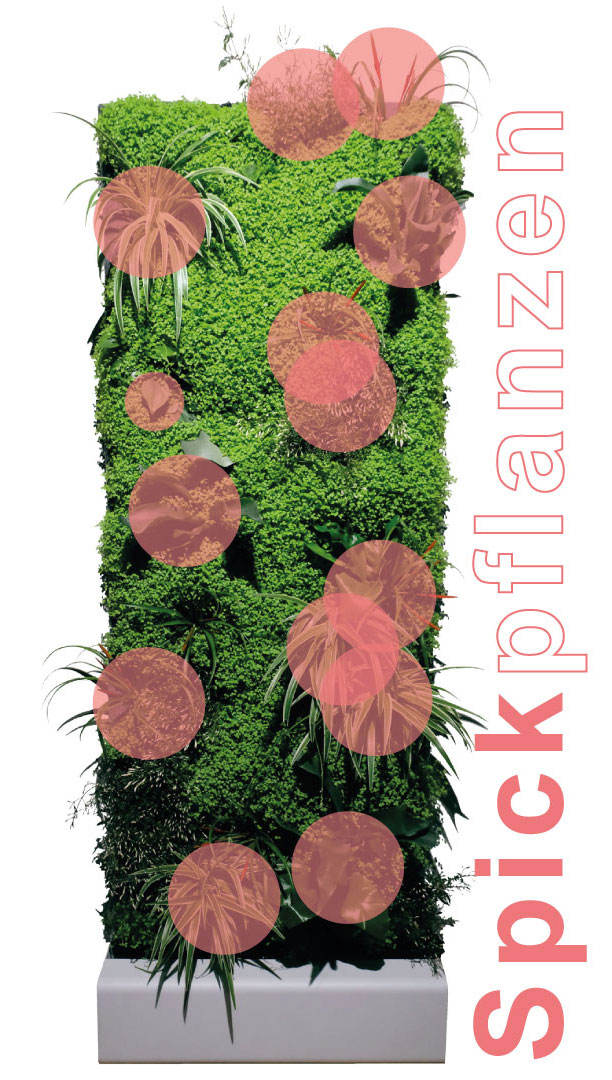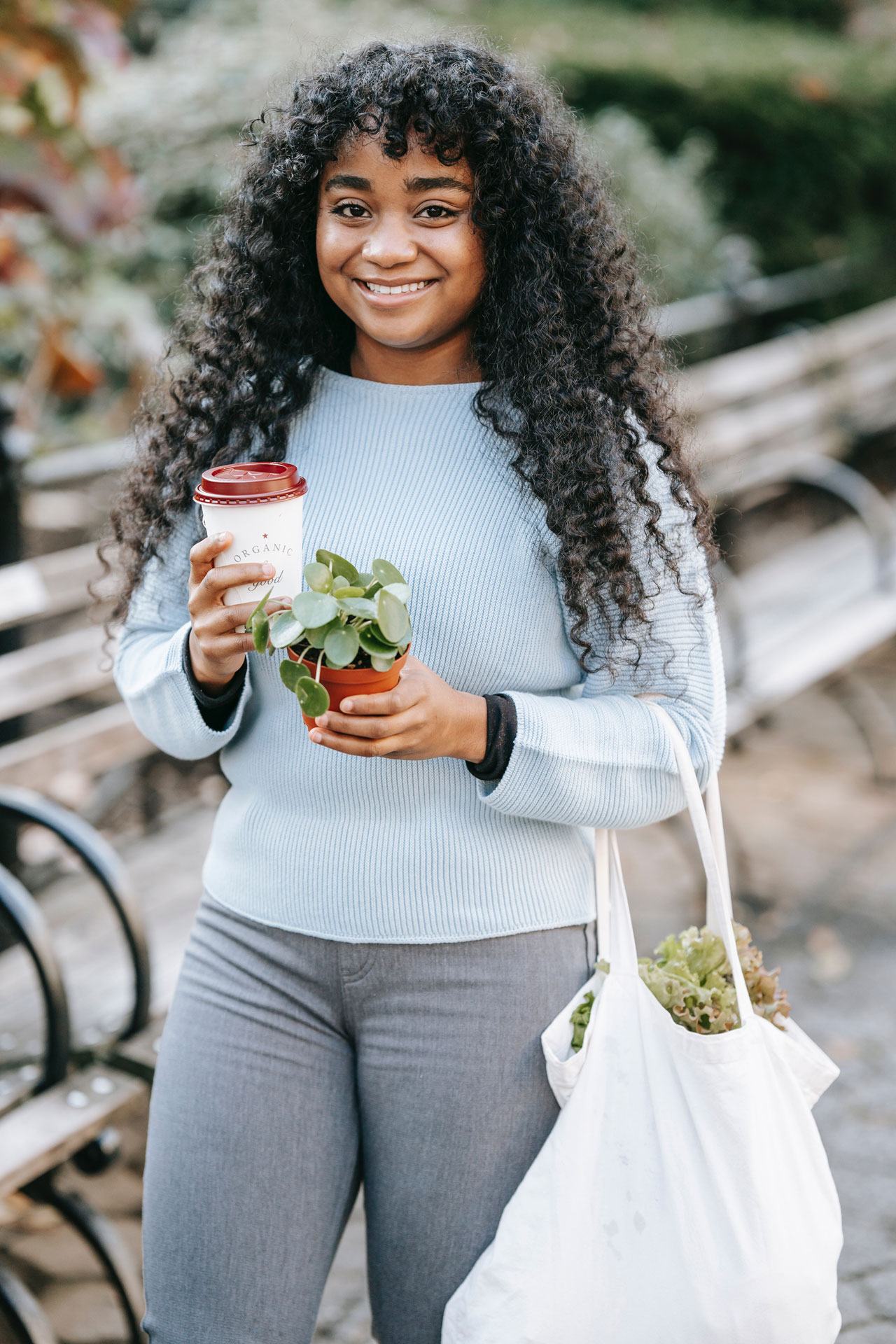10 tips for greening green walls
Greening a green wall sounds easier than you might think. I always say, «It’s like painting with plants.» Just like painting, I ask myself, what colours should I use? How can I create something exciting that is still harmonious? How and where do I put the first brush stroke or plant stroke?
Here are 10 valuable tips to simplify «painting with plants» or to inspire you.
It is advisable to divide the plants into filler and larder plants. It makes it easier to create a great plant image. To divide the plants correctly, you need to know the following:
Filler plants


Filler plants are plants whose task is to fill the wall. These tend to be small, spreading plants that work mainly as a group. All ground covers, mosses and small grasses belong in this group.
- Rather low and inconspicuous
- Planted in large areas
- The basic planting; makes the plant wall green
- Sets the mood of the planting
- Keeps a low profile
Filler plants:
- Eton crop, baby’s tears – Soleirolia soleirolii
Larder plants


The larder plants, on the other hand, are the eye-catchers of the wall. They are placed towards the end and give the wall the final touch. The larder plants always stand alone or in a group with a maximum of 3-5 plants. Flowers, shrubs, long grasses, ferns and so on are particularly suitable. Actually, any plant can be a larder. (The important thing is to set them off against the filler plants, i.e. to create a strong contrast).
- Large and imposing
- Alone or in small groups
- Plants are eye-catchers
- Gives character to the plant wall
- Is staged
Larder plants:
- Tillandsia flabellata
- Jasmin – Jasminum
- Green Lily – Chlorophytum
- Fern – Asplenium
- Philodendron – Philodendron scandens
When planting, it is easier to start with the filler plants. First fill the wall and then spike. Plant these in large groups and create a harmonious but exciting base area.
If several plant varieties are used as filler plants, there are 2 ways to create a harmonious basic planting. Either the varieties are mixed so that a homogeneous area is created or the individual varieties stand out from each other with a good contrast.

In this picture you can see 3 filler plants (Eaton crop, Philodendron and Mühlenbeckia). They stand out from each other with a strong contrast.
If you start planting in the middle of the green wall, you create a good basis for continuing to «paint» your plant picture.
On the one hand, you get an orientation surface from which you can now develop further and you can now spread out in all directions and have the greatest scope to create contrasts.



As soon as several plants of one variety are planted in a group, an area is created and this has a shape. Since plants are natural and also grow naturally, it is advantageous if the shapes of the areas also have a natural swing in them. A natural form has a dynamic character and is created by movement. If you are aiming for a natural plant image, you should make sure that this dynamic is noticeable in the planting. It is best not to plant straight lines or squares, but a form that comes from the momentum of movement, i.e. soft curved forms. These also mesh much more harmoniously with other plant groups than a rectangular shape.

Aim for dynamic and organic forms.

Do not plant straight lines or squares.

An example of dynamic and organic forms
Plants have the ability to contrast in many ways. Contrasts can be created by placing large plants next to small ones, or with the structure, e.g. small-leaved/large-leaved plants or leaves/needles, etc. But also with the colours we have a wide range. Starting with the different shades of green up to the colours and complementary colours, there is a wide range of contrasts to create.

In this «plant picture» the contrasts are very pronounced. With the leaf structures, the different sizes and shapes of the plants and with the colours, an exciting, lively and dynamic plant picture was created.
You get the best results if you simply indulge in «plant painting» when planting and don’t be afraid to try something out. The plants can be replaced at any time. If a plant is in the wrong place, take it out and put it in another place. Very simple! In fact, this is indispensable to create a harmonious plant image.

While planting, one tends to lose sight of the big picture. You literally can’t see the forest for the trees. Therefore, it is advisable to take a few steps back every now and then and look at the greenery as a whole from a distance. This is the only way to get a feeling for the greenery as a whole.


From close up, it is not possible to assess how the overall appearance of the greenery will look in the end.
What is harmonious? Harmony is always a balance. It is almost always opposites that create harmony in equilibrium. Basically, it can be said that harmony is the interplay of movement and tranquillity. While the filler plants in the group usually radiate a calmness, the cribbing plants stand for the exciting that breaks through the calmness and brings movement into the plants.
The individual plants have very individual dynamics that we can play with. Plants with round leaves and dense foliage tend to radiate calm, while plants with pointed leaves and sparse foliage radiate strong dynamics.
Ultimately, harmony is also a feeling we can rely on. Everyone has a sense of disharmony and people create harmonious things from the ground up. So just let go and follow the feeling.

My green walls are my playgrounds. I am always trying out new things and am amazed every day. For example, I have put some tropical plants in my outside walls (and that at 1000m.a.s.l.!) and they have lasted, although the gardener advised me against it. Sometimes I take a plant home because it caught my eye on the way and put it in the wall. At the moment I have a small fig tree, an almond tree and strawberry raspberries in my plant wall. Also find out what all can thrive in your plant wall, let yourself be surprised. It’s fun!
If you find an interesting plant somewhere. Always keep your eyes open, whether you’re hiking, in the garden centre or doing your weekly shopping. If you discover a plant, take it with you and plant it in the plant wall. The sense of achievement when the plant survives and thrives is priceless.

To keep the wall as beautiful as on the first day, you have to take care of it. Of course, everyone is free to let nature run rampant. But it is advisable to remove any yellow leaves once a week so that the parts of the plant underneath get more light. Once a month a little fertiliser and twice a year the plants should be cut back a little.


Always remember that plants are living beings. You have to take good care of them and always treat them with respect. Where plants feel at home, they thrive.
